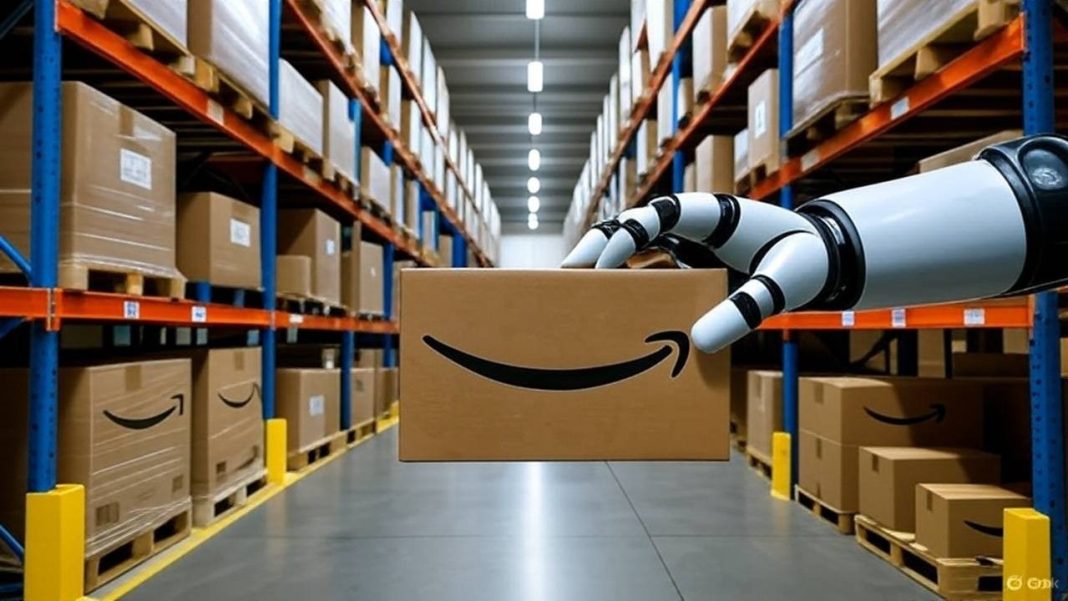Key Takeaways
- Amazon’s automation push could eliminate over 6,00,000 US hiring needs by 2033.
- By 2027, 1,60,000 warehouse roles may not be created, saving $12.6 billion.
- Company testing ‘cobots’ to handle 75% of operations within a decade.
- Amazon disputes report, says it’s actively hiring and leaked docs are incomplete.
Amazon is accelerating its warehouse automation, a move that could eliminate the need to hire over 6,00,000 US workers by 2033 according to a New York Times report. Internal documents suggest the retail giant plans to automate 75% of its operations within the next decade.
By 2027 alone, Amazon hopes to avoid creating approximately 1,60,000 warehouse roles. This automation drive could save the company 30 cents per item processed and a staggering $12.6 billion in operational costs between 2025 and 2027.
The Rise of Collaborative Robots
Behind the scenes, Amazon is testing ‘cobots’ – collaborative robots that work alongside human employees to sort, pack, and move goods. These machines are part of Amazon’s vision to make its fulfilment network more efficient and less dependent on human labour.
But this sweeping automation raises crucial questions about the future of Amazon’s massive workforce.
Managing Public Perception
According to the NYT, Amazon is already strategising how to soften public reaction to potential job cuts. The company has reportedly discussed presenting automation more favourably by participating in community projects and avoiding alarmist terms like ‘AI’ or ‘automation’.
Instead, executives have considered using neutral phrases like ‘advanced technology’ and emphasising the collaborative nature of ‘cobots’.
Still, critics argue the reality is clear. Nobel Prize-winning economist Daron Acemoglu told the New York Times: “Nobody else has the same incentive as Amazon to find the way to automate. Once they work out how to do this profitably, it will spread to others, too.”
Acemoglu added that if Amazon achieves its goal, “one of the biggest employers in the United States will become a net job destroyer, not a net job creator.”
Amazon’s Response
Amazon strongly disputes the report’s characterization. Company spokesperson Kelly Nantel told The Verge that the documents “reflect the perspective of just one team” and shouldn’t be interpreted as company policy.
Nantel stated that leaked documents frequently provide “an incomplete and sometimes inaccurate view of our plans,” adding that Amazon is “actively hiring at operations facilities across the country.” The company recently announced plans to fill 2,50,000 positions for the holiday season.
Amazon also denied that leadership is being directed to avoid certain words when discussing robotics, and maintained that community outreach initiatives are unrelated to automation plans.
Industry-Wide Implications
If Amazon’s automation vision succeeds, it could transform not just its own workforce but the entire logistics industry. Warehouses, once hubs of mass employment, may become heavily robotic ecosystems managed by algorithms with far fewer human overseers.
The irony is striking: the company that revolutionised online shopping through massive hiring may now revolutionise logistics by replacing workers with robots.




